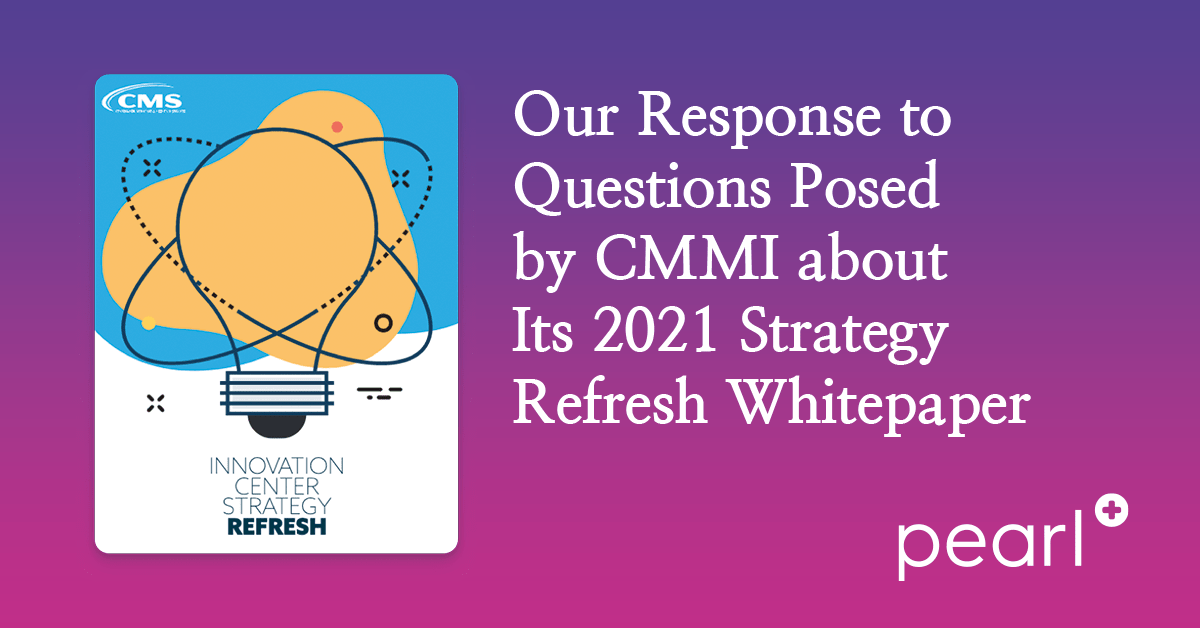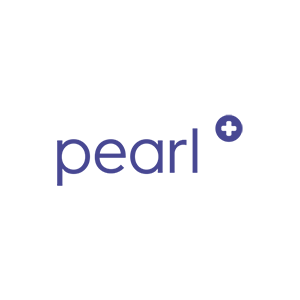The Centers for Medicare and Medicaid Innovation Center (CMMI) is hosting a listening session to discuss its October 2021 whitepaper, “Driving Health System Transformation – A Strategy for the Innovation Center’s Second Decade” (full report PDF below). Leading up to the session, CMMI circulated three open-ended questions to potential attendees, aimed at providing a platform for listening to 15 stakeholder responses.
-
What is the greatest obstacle to participating in a CMS Innovation Center or other value-based, accountable care model? How do you recommend the CMS Innovation Center alleviate this obstacle?
-
What else could the CMS Innovation Center do to support clinicians and help them be successful in models?
-
How can the Innovation Center better incorporate patient needs and goals into models? How should the impacts of value-based care on patients be measured?
Although Pearl Health isn’t a featured stakeholder during the CMMI 11/18 Listening Session, we have strong points-of-view on value-based models — especially Direct Contracting — and what CMMI can do to support clinicians and help them succeed in these models. Below are Pearl’s responses to CMMI’s questions.
“1. What is the greatest obstacle to participating in a CMS Innovation Center or other value-based, accountable care model? How do you recommend the CMS Innovation Center alleviate this obstacle?”
Obstacles
- Cost of switching. Many of Pearl’s primary care practice partners make significant investments in staff, operations, and infrastructure tied to operating in ways that are tied to specific models. For many practices, experimenting with new models is prohibitively expensive without a partner like Pearl Health to palliate the impact.
- Program uncertainty. CMMI has a long history of testing new models, many of which had short-lived existences. This level of uncertainty creates conditions that deter many providers from jumping in head-first.
- Administrative compliance requirements. Many of our primary care practice partners tell us that they face mountains of paperwork to meet demands of participating in various programs, and it’s difficult for them to identify which activities are valuable for their patients and them.
- Fear of revenue loss. Many providers lack confidence in the value of risk-based compensation compared to the fee-for-service (FFS) compensation they’re accustomed to. Without clear explanations of how models work in practice and tools to help them understand what they can expect, many practices are out to sea without a paddle.
Recommendations
- Aligning incentives. According to many of our primary care practice partners, focusing on Total Cost of Care (TCOC) and capitation is a great area of focus. The more programs that give physicians access to these mechanisms over time, the better.
- Make it simple and easy to facilitate.CMMI should make participation as simple as possible for independent practices, and encourage non-clinical players to facilitate products and services to enable the shift toward these models.
- Invest more in primary care. At Pearl, we believe that enabling primary care physicians is key to reducing downstream waste in healthcare. This includes investing more in expanding primary care services to prevent and pre-empt more expensive cases.
- Decouple premium FFS contracts with payers from value-based initiatives. FFS offers misaligned incentives for behaviors that don’t lead to better patient outcomes at a lower cost, often with negative impacts on providers’ bottom line.
“2. What else could the CMS Innovation Center do to support clinicians and help them be successful in models?”
- Easy, intuitive access to Centers for Medicare and Medicaid (CMS) data. CMMI ought to enable more user-friendly interfaces to instantly download and access patient data. At Pearl, we believe that unlocking patient data is key to value-creating insight. That’s one reason why we’ve made some of our work to access existing CMS APIs publicly available to use by anyone.
- Incentivize data-sharing across providers. Currently, patient data exist across a siloed, fragmented constellation of various provider records. CMS can provide incentives for providers to share data with other providers, which would enable better visibility — and results.
- Streamline Medicare participation for doctors who have left the program. Most doctors want to provide care to Medicare patients but, for many, the hurdles for participating again are too cumbersome.
- Make it easier and clearer to address conflicts between programs. Many providers who are attempting to participate in new models like Direct Contracting face unwelcome surprises that they cannot participate in due to insufficient time to identify and resolve Accountable Care Organization (ACO) conflicts.
- Provide clear paths to test novel care modalities for primary care. Primary care providers need ways to test new ways of delivering care — like texting and video calls — without potentially harming their primary care capitation amounts in future performance years. This means creating a methodology that indexes primary care capitation to a wider range of services.
“3. How can the Innovation Center better incorporate patient needs and goals into models? How should the impacts of value-based care on patients be measured?”
- Introduce incentive models around patient satisfaction and responsiveness. Patient satisfaction is a clear determinant of quality care, and so is responsiveness. CMMI ought to incentivize both.
- Allow patients to “reward” physicians who impact them the most. One of CMMI’s goals for models like Direct Contracting is to empower beneficiaries to personally engage in their own care delivery. One way to do this to to empower them to recognize and reward their physicians.
- Allow patients and physicians to connect digitally across state lines. Some forms of healthcare, like therapy, are already delivered digitally across state lines. CMMI should extend this progressive approach to the care that physicians, especially primary care physicians, provide.
- Focus on total cost and satisfaction measurements as north star metrics. Delivering better patient outcomes at a lower cost starts with aligning activities with the metrics that matter most. “North star metrics” are a concept utilized in the business world; CMMI would benefit from using this best practice in their approach to designing models.
- Reduce focus on risk scoring. Over-emphasis on risk scoring can encourage gaming of models, which obviously deviates from the spirt of what the models are meant to achieve: better patient outcomes at a lower cost, with greater patient and provider satisfaction.
Key scrolling to read CMMI’s whitepaper.
For more healthcare insights, check out these resources. Follow Pearl Health on LinkedIn or Twitter for regular insights in your newsfeed.


